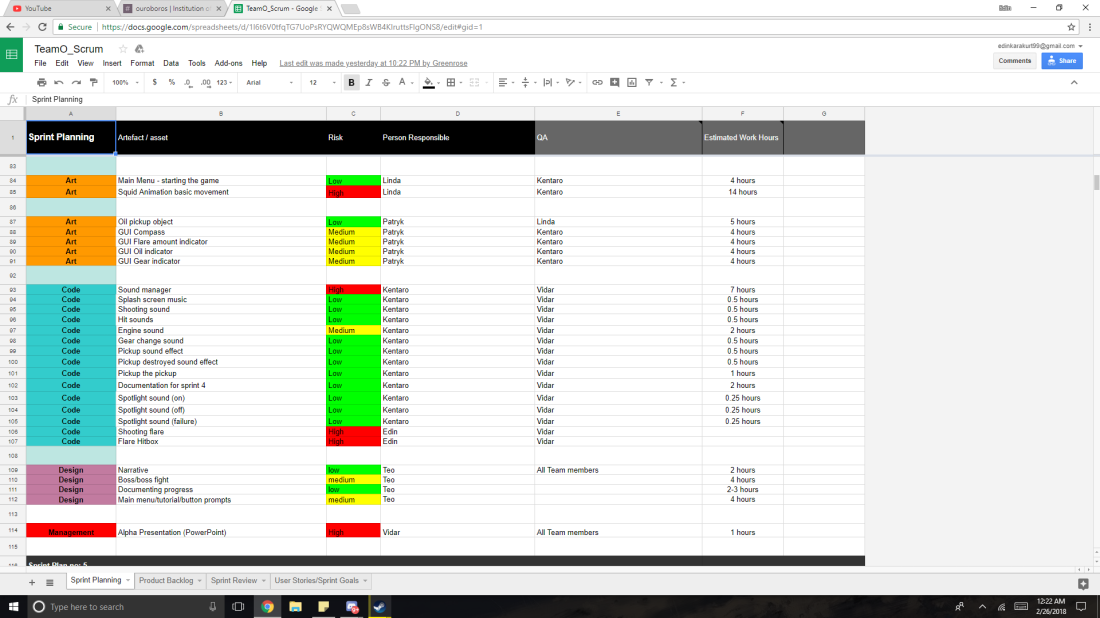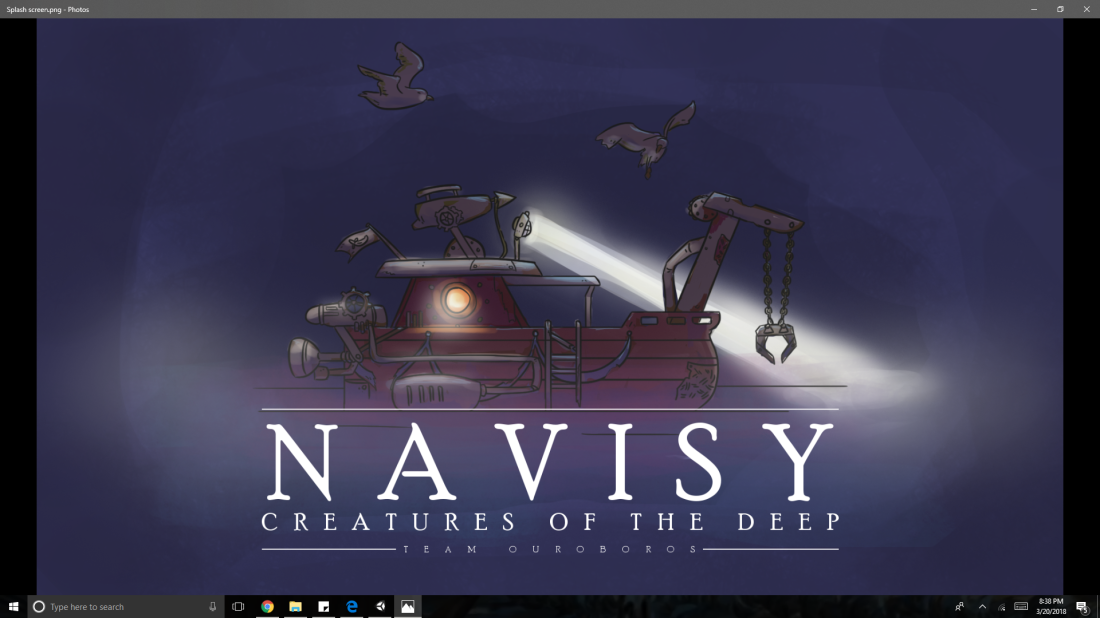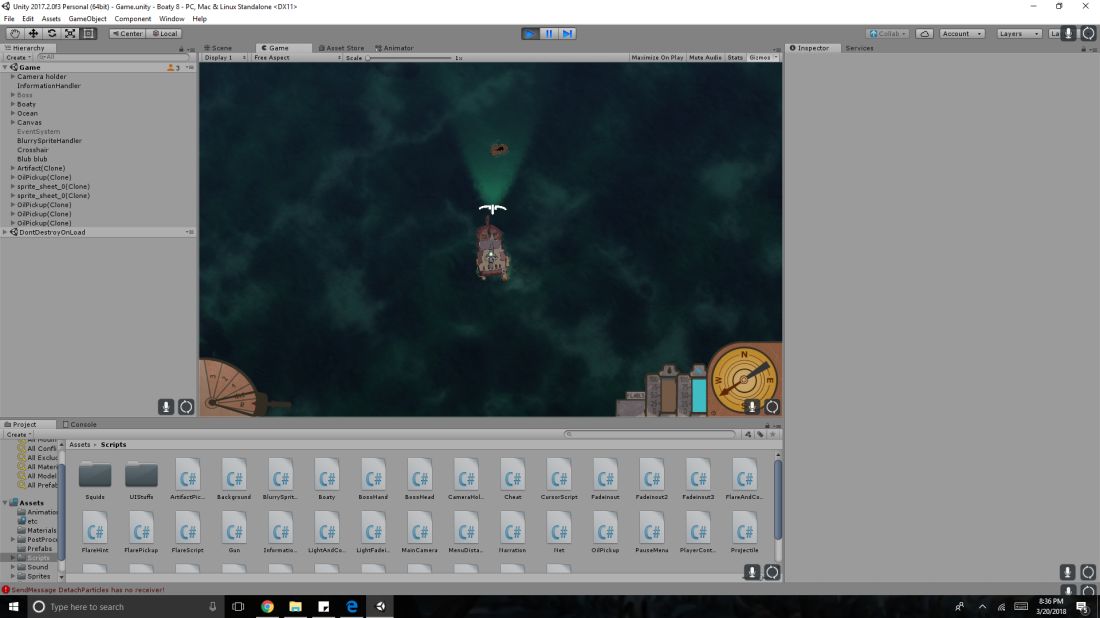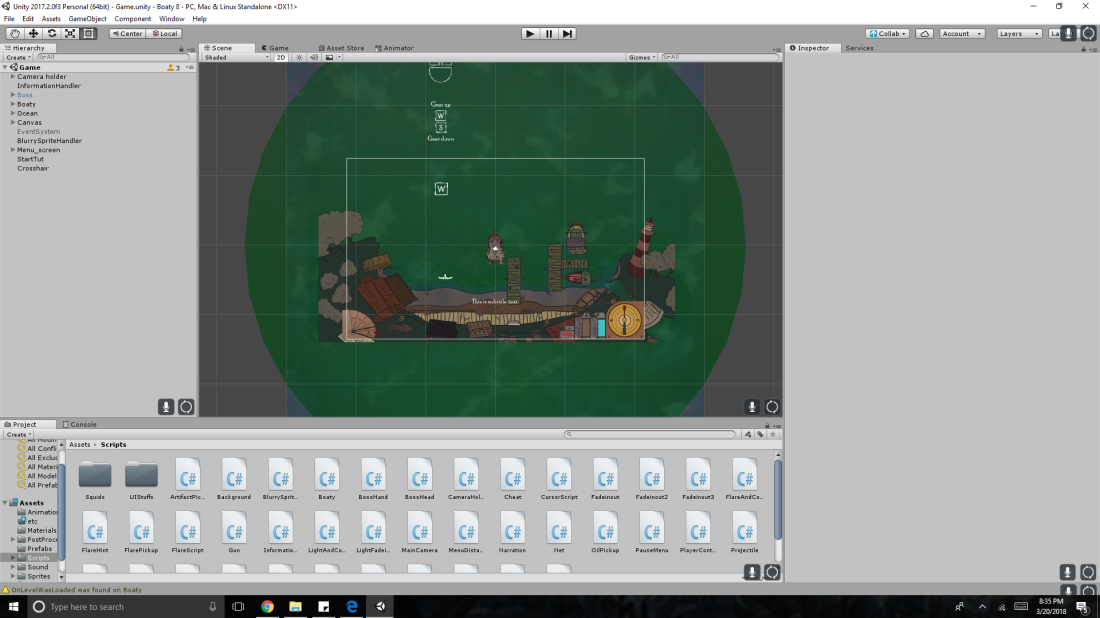This week I’ll will be going over the managing tool we call “Scrum” and how it affected our development. I believe the usage of scrum has helped us tremendously in coordinating what we were supposed to do in sprint planning weeks. It has helped us organize our development by breaking it into parts in every level. This levels containing what every minor is going to do, what will be done before alpha and who will check the progress of that persons work. Yet there is one I thing I do not really about scrum which is the hours of work written in the beginning of the sprint week. I understand that we are not experienced enough to know how long a feature is going to be developed, but I still feel that we can never be sure if we can finish that feature within the necessary hours as problems will occur, making the hours spent more than usual. This also correlates with the risk factor written before any feature, making us again guess how much effort will be put and if it is even probable in the first place.
Another great aspect of scrum could be said that it is also used to write the possible things that can be done in the future. In the continuation of the development, these possibilities are assessed as if they are worth the effort of doing them.
But I believe the most important aspect of scrum is the deadline. Even thought not everyone, including me, weren’t able to reach all the deadlines, I believe we have improved on delivering them much better, as time has passed. The reason being scrum helping us improve our time management by quite a bit.
As an end note I would like to say that scrum has made the development a much more manageable. Making us less stressed and more on point on feature requirements, specifications and possibilities. My only minor gripe being the time and risk factors that we will learn to asses better in the future as experience will come along, is kind of difficult to investigate during this period.



